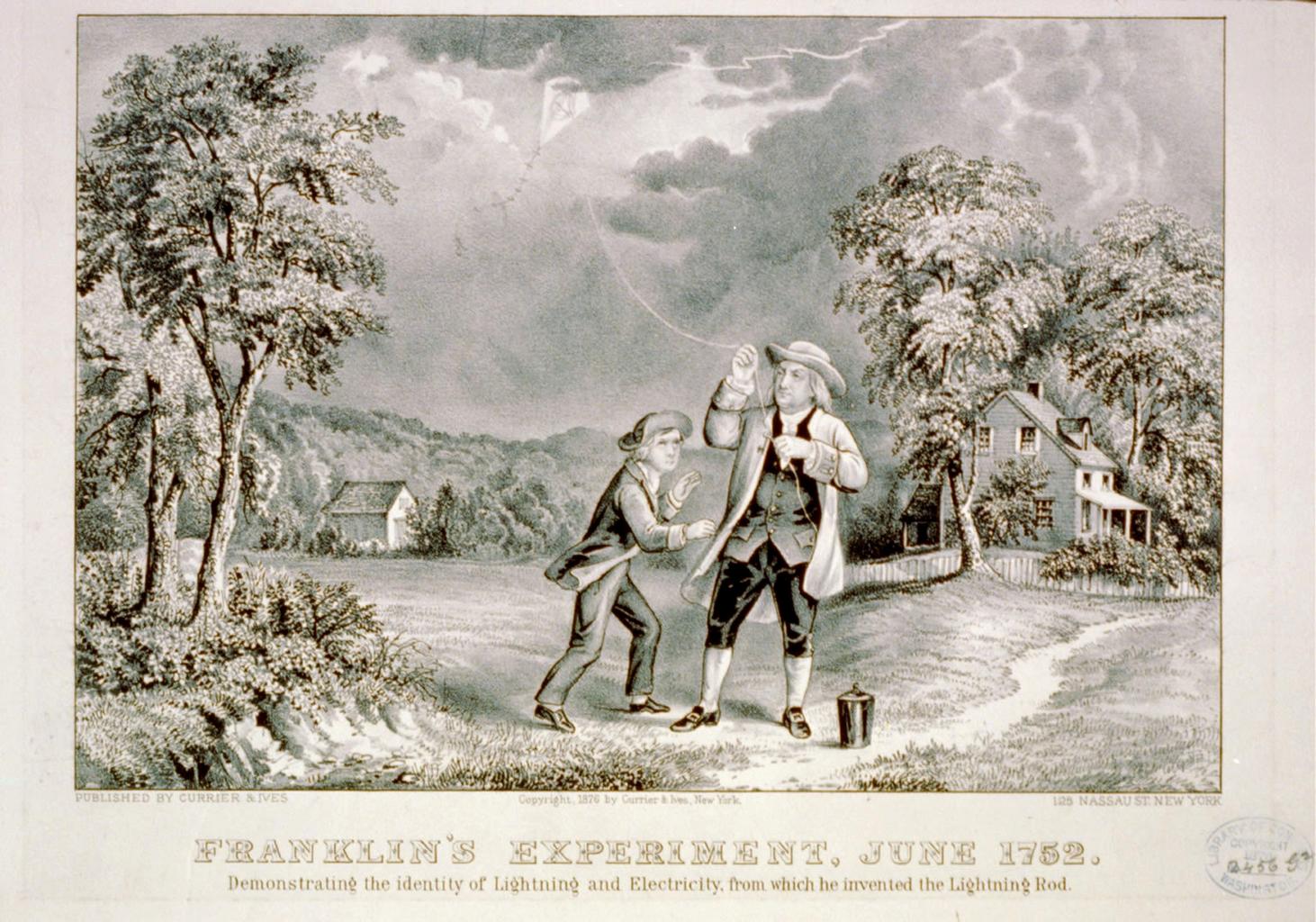Lightning conductor

|
| This 1876 Currier & Ives print depicts Franklin's kite experiment in June 1752. It's a fanciful illustration of Franklin's identity of lightning and electricity, from which he invented the lightning conductor. |
Contents |
[edit] Introduction
A lightning conductor (or lightning rod) is a metallic tip typically placed at the highest point of a building. Lightning conductors are most often made from conductive materials, such as copper and aluminium, and come in many different forms including hollow, solid, pointed, rounded, flat or brush shaped. Lightning conductors are also referred to as finials, air terminals or strike termination devices.
In the 1800s, some lighting conductors took on decorative characteristics, frequently topped with glass balls and weather vanes.
[edit] Origin
There are earlier examples of exploratory (or even unintentional) lightning conductors prior to the work of Benjamin Franklin. However, it was Franklin who made the formal connection between lightning and electricity. The Franklin Rod tested his theories as part of his ongoing investigations into the properties of electricity.
For his work with lightning conductors, Franklin explored using an iron pole sharpened to a point. He pursued this theory around the same time he proposed the idea of flying a kite with a key attached during an electrical storm.
[edit] How lightning conductors work
Lightning conductors do not prevent lightning strikes, they simply provide a low-resistance path to earth when strikes occur. In this way, the discharge is transmitted through the conductor instead of through the building so that the latter is protected from electrical and other damage, fire or injury to occupants.
To perform this function, the lightning conductor must be properly grounded. One or more types of conductors, often in the form of metal strips, are used to earth the structure. The conductors are sometimes provided with sharp points. At these points the paths of the electric field are closely concentrated so that ionisation of the air around the points takes place.
[edit] Related articles on Designing Buildings Wiki
Featured articles and news
One of the most impressive Victorian architects. Book review.
RTPI leader to become new CIOB Chief Executive Officer
Dr Victoria Hills MRTPI, FICE to take over after Caroline Gumble’s departure.
Social and affordable housing, a long term plan for delivery
The “Delivering a Decade of Renewal for Social and Affordable Housing” strategy sets out future path.
A change to adoptive architecture
Effects of global weather warming on architectural detailing, material choice and human interaction.
The proposed publicly owned and backed subsidiary of Homes England, to facilitate new homes.
How big is the problem and what can we do to mitigate the effects?
Overheating guidance and tools for building designers
A number of cool guides to help with the heat.
The UK's Modern Industrial Strategy: A 10 year plan
Previous consultation criticism, current key elements and general support with some persisting reservations.
Building Safety Regulator reforms
New roles, new staff and a new fast track service pave the way for a single construction regulator.
Architectural Technologist CPDs and Communications
CIAT CPD… and how you can do it!
Cooling centres and cool spaces
Managing extreme heat in cities by directing the public to places for heat stress relief and water sources.
Winter gardens: A brief history and warm variations
Extending the season with glass in different forms and terms.
Restoring Great Yarmouth's Winter Gardens
Transforming one of the least sustainable constructions imaginable.
Construction Skills Mission Board launch sector drive
Newly formed government and industry collaboration set strategy for recruiting an additional 100,000 construction workers a year.
New Architects Code comes into effect in September 2025
ARB Architects Code of Conduct and Practice available with ongoing consultation regarding guidance.
Welsh Skills Body (Medr) launches ambitious plan
The new skills body brings together funding and regulation of tertiary education and research for the devolved nation.
Paul Gandy FCIOB announced as next CIOB President
Former Tilbury Douglas CEO takes helm.






















